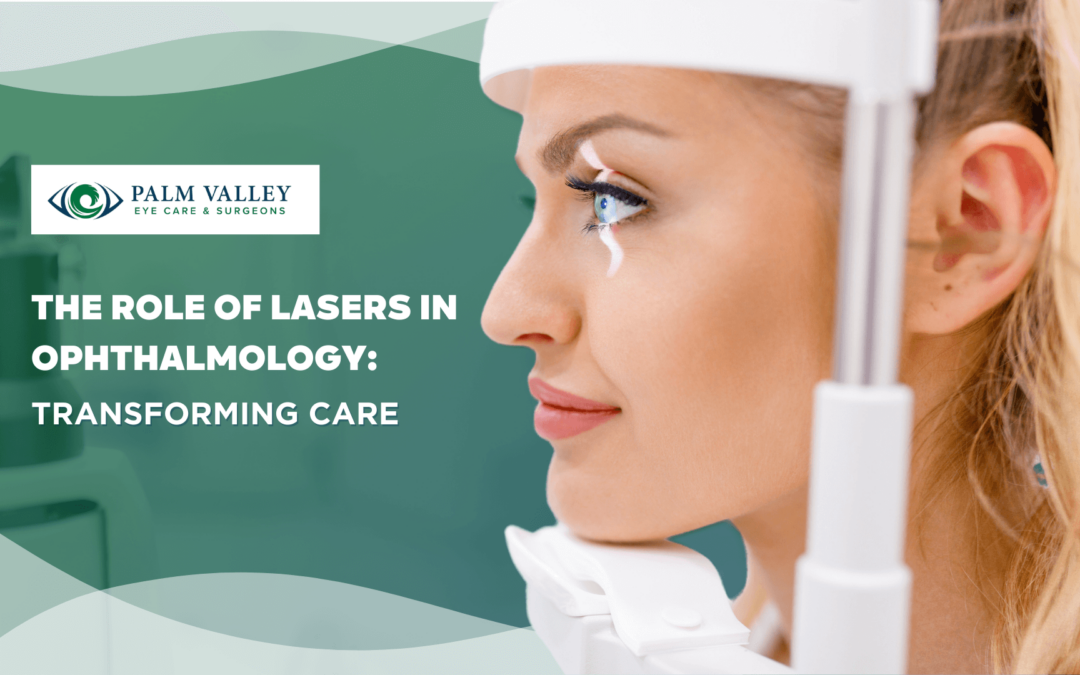In the ever-evolving field of ophthalmology, lasers have become invaluable tools that enhance patient care and improve outcomes. From correcting refractive errors to treating complex retinal conditions, laser technology offers precise, minimally invasive solutions that benefit patients significantly. Did you know that current LASIK methods utilize 2 different lasers? In this post, we’ll explore various types of lasers used in ophthalmology, the conditions they treat, and the advantages they provide.
1. Excimer Laser
The excimer laser is a well-known technology primarily utilized for refractive surgeries, including LASIK and PRK. It works by emitting a beam of ultraviolet light and vaporizes water within the tissue causing a slight cooling effect. This treatment results in very precise reshaping of the cornea.
Conditions Treated:
- Myopia (nearsightedness)
- Hyperopia (farsightedness)
- Astigmatism
Benefits:
- Patients experience quick recovery times with minimal discomfort.
- The treatment significantly reduces dependency on glasses or contact lenses, improving overall quality of life.
2. Femtosecond Laser
Femtosecond lasers are a newer technology used in laser-assisted cataract surgery, LASIK, and intrastromal refractive surgeries like SMILE. They enhance our ability to create very precise cuts within the target tissue.
Conditions Treated:
- Parts of Cataract surgery, including astigmatism correction
- Flap creation during LASIK
Benefits:
- The accuracy and safety of this technology enhance surgical precision
- The technology provides alternatives to correcting astigmatism and myopia and can reduce dependence on glasses or contact lenses
- Patients often experience quicker recovery times, allowing them to resume normal activities faster.
3. YAG Laser (Yttrium Aluminum Garnet)
The YAG laser is commonly used for procedures such as posterior capsulotomy, which addresses cloudy vision following cataract surgery, and laser iridotomy, which helps prevent angle-closure glaucoma.
Conditions Treated:
- Secondary cataracts
- Narrow Angle anatomy at risk for Angle Closure Glaucoma
Benefits:
- Quick, outpatient procedure that may be available in your doctors office
- Provides immediate results restoring clarity of vision for patients with capsular opacification.
- It plays a crucial role in reducing the risk of angle closure (a truly dangerous and blinding condition) in patients with narrow angle anatomy.
4. Argon Laser
The argon laser is primarily utilized for treating retinal and glaucoma conditions. The laser can be set to target specific pigments in the eye, such as melanin or hemoglobin. It is particularly useful for sealing retinal tissue, leaky blood vessels, and improving drainage in the eye.
Conditions Treated:
- Diabetic retinopathy
- Vein occlusions
- Retinal tears or detachment
- Open Angle Glaucoma
Benefits:
- The procedure is performed without the need to create cuts or opening in the eye
- Allows for targeted treatment
- Helps preserve vision and prevent further complications related to the listed conditions
5. Diode Laser
The diode laser is versatile and is used less commonly at this time for treatment of retinopathy of prematurity and managing intraocular pressure in open angle glaucoma patients.
Conditions Treated:
- Retinopathy of prematurity
- Open Angle Glaucoma
Benefits:
- Stop aggressive vascular growth in retinopathy of prematurity
- This laser can reduce the amount of fluid created by the ciliary body, therefore reducing intraocular pressure in Open Angle Glaucoma
6. Intense Pulsed Light (IPL)
While not technically a laser, Intense Pulsed Light (IPL) therapy is gaining traction in ophthalmology for treating dry eye syndrome and improving ocular surface conditions.
Conditions Treated:
- Meibomian gland dysfunction
- Rosacea
- Dry eye disease
- Sun spots
- Vascular skin lesions
Benefits:
- IPL treatment enhances tear film stability and reduces inflammation.
- It is a non-invasive option with minimal discomfort and no downtime, making it an attractive choice for patients suffering from chronic dry eye.
Conclusion
Lasers have revolutionized the field of ophthalmology, providing innovative treatments that enhance vision care and improve patient outcomes. From refractive surgeries to the management of complex eye conditions, the benefits of laser treatments have come a long ways! If you’re experiencing vision problems or have questions about laser options, consult your ophthalmologist to explore the best treatment for your specific needs.

